Moscow District
more than a year agoOddly enough, the area is also located next to the main highway to Daugavpils, Russia and Belarus so one of Riga’s poorest areas is also home to a well-kept stretch of road that’s lined with modern glass shopping centres, futuristic car dealerships and the massive LIDO Recreation Centre, which features one of the largest log cabins in Europe. The area also features the trendy warehouse district just behind the Central Market called Spīķēri, which is home to cafés, shops and galleries as well as a picturesque promenade along the bank of the Daugava river. Although some sections of the district, like the Church of Jesus square that includes an embassy and a luxury hotel, look as if they could be a part of the old town, bear in mind that you’re literally on the other side of the tracks here and the usual safety precautions should be taken. We recommend a stroll during daylight hours.
Getting there
Although you can easily walk to the area from Old Riga, you might consider taking the N°15 trolleybus from the University stop or trams N°7 or 9 from the Opera or Central Market stops if you’d like to explore the more distant former Jewish ghetto.
Sights
Academy of Sciences (Zinātņu Akadēmija) Akadēmijas laukums 1. This Soviet edifice is a cousin to similar statements of ugliness all over Eastern Europe and local nicknames for the Empire State building copy include ‘Stalin’s birthday cake’ or ‘the Kremlin’. Most Latvians just consider themselves lucky that the portrait of Uncle Joe that was supposed to be a part of the facade never came to fruition. If you look close enough you can spot several hammers and sickles, but best of all, at a height of 65m, the 17th-floor balcony is open to the public from April - October for a small fee. Pay at the information desk on the ground floor.
Central Market (Centrāltirgus) Centrāltirgus iela, www.centraltirgus.lv. When construction was completed in 1930, Riga’s Central Market was one of the largest and most modern marketplaces on the European continent. Seventy years later, four of the five pavilions, which were used as zeppelin hangars during WWI, still serve their original function as meat, fish, produce and dairy markets. The bustling atmosphere also hasn’t changed much, although most of the hawkers are more reluctant to haggle than in the past. The markets spill out beyond the confines of the hangars and operate throughout the day, some longer than others. Each pavilion has slightly different opening hours so if in doubt check its website. Open 08:00 - 17:00, Mon, Sun 08:00 - 16:00.
Great Choral Synagogue (Die Greise Hor Shul) At the corner of Gogoļa and Dzirnavu. Although the colossal synagogue no longer exists, it’s worth the 10 minute walk from the train station to see what remains of this one-time place of worship and to meditate on one of the most beastly crimes committed during the Nazi occupation of Latvia. On July 4, 1941, hundreds of Jewish refugees from Lithuania and local Latvian Jews were herded into the basement of the synagogue which was then intentionally burned to the ground. Only ruins, a metal menorah and a memorial stone remain. A memorial to Žanis Lipke and other Latvians who saved hundreds of Jews is located next to it.
Grebenshchikov Church (Grebenščikova baznīca) Krasta 73, tel. (+371) 67 11 30 83. The first wooden place of worship was built here in 1760, and the current building went up in 1814. It is home to one of the largest congregations of Old Believers in the world, an Orthodox Christian sect that fled persecution in Russia in the 18th century. Take tram N°7 or 9 to the Daugavpils stop. You can’t miss its shiny golden dome.
Moscow District street art Some of our favourite examples of street art can be found under the bridges where Elijas, Maskavas and Lāčplēša steets meet. It’s an easy walk or bike ride from the Central Market or you can simply take tram No.7 or 9 to the Elijas iela stop, but bear in mind that there’s lots of car and tram traffic here, so stick to the sidewalks to be safe. Here you’ll find cityscapes, a DJ spinning records, a local beauty casually hanging out, what appears to be a hard-luck drunk sitting on the roof of an old wooden building and lots more.
Old Jewish Cemetery (Ebreju kapi) Between Ebreju, Līksnas and Virsaišu streets. Odd as it might sound to modern ears, Jews weren’t allowed to bury their dead in Riga until 1725 and even then it was on the very outskirts of the suburbs in what is today the Moscow District. Before then, bodies were transported to the closest Jewish cemetery in Jelgava, over 40km away. The Old Jewish cemetery was a part of the Jewish ghetto during the Nazi occupation and when the war ended and the Soviets took over many of the headstones and bricks from the walls were pilfered. Eventually, it was turned into a park and today the only evidence of its original purpose is a large stone with Star of David.
Orthodox Church of the Annunciation (Dievmātes pasludināšanas pareizticīgo baznīca) Gogoļa 9, tel. (+371) 67 22 05 66. The original church that once stood here was destroyed when the entire area was razed in 1812 to deprive Napoleon’s army of shelter. The army took a different route. Fortunately, some of the historic icons were saved and now adorn the walls of the current yellow wooden church that was built in 1818. Although it looks like it’s falling apart on the outside its simple interior is still worth a quick peek.
Riga Church of Jesus (Rīgas ev. lut. Jēzus baznīca) Elijas 18, tel. (+371) 67 22 41 23, www.jezusdraudze.lv. After decades of war in Livonia, the Swedish Empire finally gained control of Riga in 1621. To celebrate an end to war, it was decided that a church dedicated to Jesus should be built outside the city gates. Work was completed in 1638, but sadly peace didn’t last long and the church was destroyed by Russian troops in 1656. It was rebuilt in 1688, but was once again destroyed during the Russian siege of Riga in 1710. It rose from the ashes in 1733 only to be razed yet again by the Russian rulers of Riga in 1812 fearing an attack from Napoleon’s troops. The current octagonal structure was erected in 1818. It has a 27m-high tower and is the largest wooden church in Latvia.
Riga Ghetto and Latvian Holocaust Museum (Rīgas geto Latvijas holokausta muzejs) Although more of an outdoor monument with exhibits than a museum, this courtyard between Maskavas and Krasta streets is still worth a visit, especially if you’re interested in Jewish history. Its main feature is an ominously long wall covered with the names of victims of the Holocaust in Latvia. You can also look at Nazi propaganda, horrifying photos of tortured bodies, stills of ghetto life and grainy black and whites of old synagogues across the country, most of which no longer exist. A small indoor exhibition is also usually available. Open 10:00 - 18:00. Closed Sat.
Warehouse District (Spīķeru kvartāls) Spīķeru, Pūpolu and Nēģu streets and between Maskavas, Turgēņeva and Krasta streets, www.spikeri.lv. Located just behind the Central Market these beautiful brick buildings were originally erected in the second half of the 19th century as part of a concerted effort to keep warehouses out of the city centre. After the massive market was created in the 1930s some of the buildings were reconstructed, but many still retain their original functional brick architectural style. The area between Maskavas and Krasta streets has been designated an area of urban revitalisation and lots of cafés and galleries are a part of its rebirth.
Jewish ghetto
The Nazis didn’t waste any time enacting their final solution in Latvia. Jews that hadn’t fled with the retreating Soviet army were soon forced into hard labour or murdered in the city after German troops occupied Riga on July 1, 1941. Although many Latvians rejoiced at the departure of the Red Army that had tortured, murdered or deported tens of thousands of Latvians during what locals refer to as Baigais gads, or the Terrible Year, they soon realised that the Nazis had no plans to restore their nation’s sovereignty. Instead it essentially became a German colony within the Reichskommissariat Ostland.
Jews suffered the most during this period. Within three days of the Nazi occupation of Riga, the city’s main synagogue was burned to the ground with hundreds of Jews inside (see Great Choral Synagogue). By October 25 of that year roughly 29,000 Jews were forced to live in a sealed ghetto in the Moscow district between Lāčplēsa, Maskavas, Ebreju, Lauvas, Kalna, Lazdonas and Jēkabpils streets where a sizeable Jewish community was already established. Those able to work, about 4,000 people, were sent to a segregated section within the ghetto. On November 30 groups of 1,000 people were marched from the original ghetto to the Rumbula forest and shot. A week later the large ghetto was destroyed and its remaining inhabitants suffered the same fate at Rumbula. The ghetto was finally abandoned in November 1943. Jews still able to work were transferred to the Kaiserwald concentration camp outside of Salaspils. The remaining elderly, young and infirm were deported to Auschwitz.
Food & Drink
There are plenty of little cafeterias and bars in the area, but many are incredibly dodgy boozers that happen to also serve food. The Mols and mc2 shopping centres offer plenty of decent, some might even say, trendy cafés where you can mingle with soccer moms instead of aggressive drunks on their umpteenth beer. We recommend the following places in the area:
Hanza Pub Elijas 7 (Hanza Hotel), tel. (+371) 67 79 60 40. This cosy cellar pub is decorated with old fishing nets, cloth made to look like sails and reproductions of antique maps and lithographs, all in keeping with the nautical Hanseatic League theme. Order international food from pastas and salads to steaks and even prawns next to exposed brick walls or, in the summer, on its terrace on a charming square with a wooden church at its centre. Also open for breakfast from 07:00 - 10:00. Open 12:00 - 23:00. (€6 - 10).
LIDO atpūtas centrs (LIDO Recreation Centre) Krasta 76, tel. (+371) 67 50 44 20, www.lido.lv. If Paul Bunyon built a log cabin in Latvia it would look like this! Mr. Ķirsons of the LIDO Empire has outdone himself with the biggest buffet of home cookin’ this country has ever seen. Enter the tremendous cellar and discover another restaurant with two bars which serve beer brewed on the premises. Take tram N°3, 7 or 9 to the ‘Atpūtas centrs LIDO’ stop and walk about 5 - 10 minutes in the direction of the huge windmill. Open 10:00 - 23:00. (€5 - 7).
Shopping
Gastronome Krasta 68a (mc2 shopping centre), tel. (+371) 67 00 68 68, www.mc2.lv. The first boutique market and deli in Latvia. Buy exotic tea, gourmet coffee, a fresh baguette, loads of spices, a t-bone steak and a kilo of prawns or just have a seat with a glass of wine and a cheese platter. Open 10:00 - 21:00, Sun 10:00 - 19:00.
Mols Krasta 46, tel. (+371) 67 03 03 00, www.mols.lv. A huge modern glass structure which houses pretty much the same shops and restaurants as all the other shopping malls. The Rimi hypermarket is open until 24:00. Take trams N°7 or 9 from the Opera to the Mazā kalna stop. Open 10:00 - 22:00.
Warehouse District
Spīķeru, Pūpolu and Nēģu streets and between Maskavas, Turgēņeva and Krasta streets


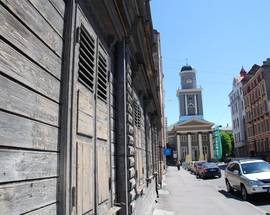
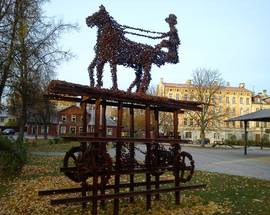

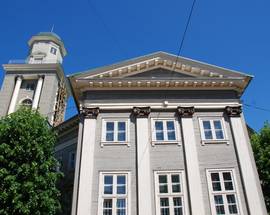
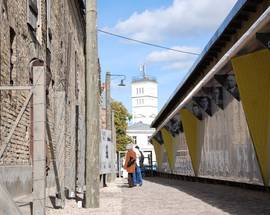
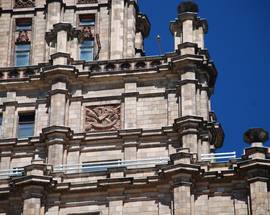
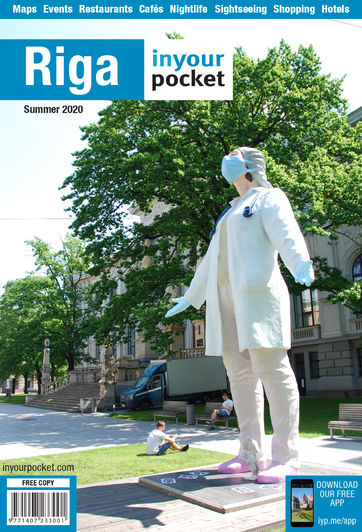


Comments